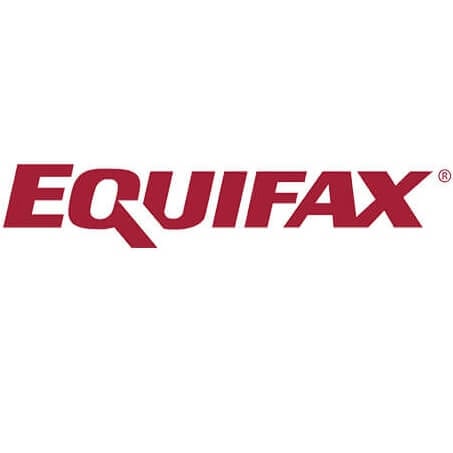This is part of a series of columns about how to protect important information and people in your life against fraud and scams. Stay tuned for more.
As assets go, you would think real estate is uniquely resistant to theft. After all, it’s not like cash or a vehicle; no one can run off with it. But real estate can be leveraged for financial gain. That’s why Canadians have to contend with crimes such as mortgage fraud and title fraud. Here’s how they work, and how to protect yourself.
Mortgage fraud in Canada
The most common form of mortgage fraud in Canada is what’s called first-party fraud: A mortgage applicant misrepresents aspects of their financial affairs when they apply—for example, by claiming a higher income than they really earn or by failing to disclose debts.
“They’re not pretending to be someone else,” says Carl Davies, head of fraud and identity at Equifax Canada. And the targets of first-party mortgage fraud are lenders, not consumers. Still, Canadians as a whole suffer as a result, as the costs of first-party fraud get passed on to them through higher financing costs.
What Canadian consumers need to watch out for and protect themselves against, however, is third-party mortgage and title fraud. This is when a fraudster pretends to be you in order to apply for a loan in your name, using your home as collateral. They could also assume the title of your home so they can re-mortgage or sell it—even without you knowing.
This crime can have serious consequences for your finances now and into the future. You may face claims from lenders to service or repay funds borrowed. The impact on your financial identity can harm your credit score and affect your ability to obtain credit. Cleaning up the aftermath of fraud with financial institutions and law enforcement takes time and effort. It may take months or years to get your financial health back on track.
How mortgage fraud happens
Protecting yourself against mortgage and title fraud begins with understanding how it typically unfolds.
“Identity theft is usually the precursor to this kind of fraud,” Davies says, which explains why mortgage fraud is becoming a bigger concern in this digital age. “The ability for people to commit identity theft now is easier than it has ever been.”
The advent of generative AI has enabled fraudsters to convincingly falsify or create fraudulent documents, and even impersonate property owners with deepfake audio and video. And because mortgages represent one of the largest sums of money any of us ever have access to, it’s a leading way for criminals to profit from identity theft.
The bad actors might obtain pieces of your “tombstone information”—name, address, date of birth—through tactics like email and text phishing scams, or by scouring your social media posts. They can also look for more information about you on the dark web (hidden websites where criminals can buy and sell stolen data).
Fraudsters often exploit people’s identities over several years. Often, they start small by applying for secured credit cards in their victims’ names with just a $1,000 credit limit, and then watching the credit limits rise over time.
“All of this is often done without the knowledge of the consumer,” Davies notes. A fraudster may open a credit card account under your name—and perhaps a full mortgage or home equity line of credit—using their own phone number and email address, so you won’t be contacted by the lender until it’s too late.
How to cut the risk of mortgage fraud
Here’s how to protect yourself from becoming a target of mortgage fraud.
Protect your identity. First and foremost, Davies says, preventing mortgage and title fraud “goes back to protecting your identity.” That means not disclosing key information online, via email or on social media. Don’t post pictures of your birthday or your new home. Fraudsters today pick through your digital footprint the way they used to rifle through people’s garbage, says Davies. “Be mindful of where your data is and make sure you’re protecting it as much as possible.” Check your credit reports. Canada’s credit bureaus, including Equifax, maintain a summary of your credit history. Access your credit report regularly to check for unauthorized activity. For example, if someone applies for credit in your name, the lender will make an inquiry to a credit bureau, and that will show up on your report. You may be able to catch the breach before the loan is approved. Subscribe to a credit monitoring service. Equifax Complete Protection includes features such as credit monitoring with alerts, credit scores and credit reports updated daily, and more. (More details below.)
Protection includes features such as credit monitoring with alerts, credit scores and credit reports updated daily, and more. (More details below.)
Equifax Complete Protection
Equifax Complete Protection is a credit and cybersecurity protection service designed to help Canadians spot the signs of identity fraud faster.
Provides daily credit monitoring and alerts Scans for your personal data on the dark web Social media monitoring by industry leader ZeroFoxSubscription price: $34.95 per month
What to do if your identity has been stolen
If you think you may be a victim of identity fraud, including mortgage or title fraud, act fast. Here’s what to do:
Let the banks and/or credit unions of all your accounts know, as well as any financial institutions contacted by the fraudsters. (The financial institutions’ will appear on your credit report.) Report the breach to your local police and the Canadian Anti-Fraud Centre. Contact Canada’s two credit reporting agencies, Equifax and TransUnion, so that they can add a fraud alert to your credit report. This signals to potential lenders to take extra steps to verify your identity before agreeing to a loan. “Putting that consumer statement on your credit file is a key step to stop any further losses,” Davies says.Next-level fraud protection from Equifax Complete Protection
An even better way to avoid mortgage fraud and title theft, along with other forms of digital fraud, is to subscribe to Equifax Complete Protection. This suite of monitoring and identity protection tools helps keep your personal data and devices safe, and helps you monitor your credit and ID.
Features of Equifax Complete Protection include:
Daily credit monitoring and alerts to notify you of key changes to your Equifax credit report, such as a new credit card or loan application WebScan, which checks the dark web for a list of personal information that you provide, such as credit card numbers Social media monitoring by ZeroFox, to alert you to suspicious activity on your social media accounts Online data encryption by NordVPN and online password generation and storage by NordPass Parental controls from Bitdefender to restrict which websites and apps your kids can access Device protection from Bitdefender to help stop phishing attempts and protect devices from viruses and malwareIf your identity is stolen, an Equifax identity restoration specialist will help you recover it—plus you can get up to $1 million in identity theft insurance (not available for new purchases in Quebec). Equifax Complete Protection costs $34.95 per month—a modest price to pay for peace of mind. To learn more, visit the Equifax website.
This article is sponsored.
This is a paid post that is informative but also may feature a client’s product or service. These posts are written, edited and produced by MoneySense with assigned freelancers.
Read more about fraud and scams:
How to protect yourself from identity fraud in Canada Canadian seniors, watch out for these scams Why do Canadians keep falling for scams? How to protect your email account from scams and fraudGet free MoneySense financial tips, news & advice in your inbox.
The post Mortgage fraud in Canada: How to protect yourself appeared first on MoneySense.








.jpg.webp?itok=1zl_MpKg)





 Bengali (Bangladesh) ·
Bengali (Bangladesh) ·  English (United States) ·
English (United States) ·